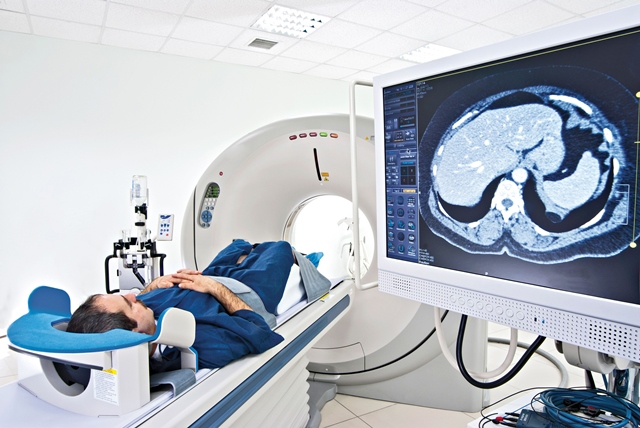One of the things that makes hospitals stand out is that many of them are home to impressive #medical imaging scanners. If you visit a Canadian hospital, you might find a computed tomography (CT) machine, a magnetic resonance imaging (MRI) machine, or a single-photon emission tomography (SPECT) machine. In some places you might even find advanced machines that combine imaging modalities, such as hybrid positron emission tomography (PET) and CT (called PET-CT for short).
These medical imaging technologies can be used for diagnosing and monitoring a range of diseases and conditions, from cancer to internal injuries. They can also be used to guide surgeries and other treatments. As the technology advances, so too do the uses.
But taking a step back, how does medical imaging look in Canada as a whole? Are the technologies available where they are needed?
We recently conducted a large inventory — the Canadian Medical Imaging Inventory – to find out where medical imaging equipment is located and how it’s being used. The inventory revealed that most imaging machines are located in hospitals in major urban areas, where the population is highest. The regions with the greatest number of machines were Ontario, Quebec, British Columbia, and Alberta. The less populated provinces and territories have fewer machines, with the lowest numbers in the Northwest Territories, Yukon, Nunavut, and Prince Edward Island (PEI). The other east coast provinces — Nova Scotia, New Brunswick, and Newfoundland and Labrador — as well as Manitoba and Saskatchewan, were in the middle with a relatively moderate number of machines.
Interestingly, when counting the number of imaging machines per population, some of the less populated regions actually have a greater number of CT and MRI scanners per number of people, but the population is geographically dispersed so the machines may still be difficult for patients to access.
We created the inventory using a survey that captured information on six imaging modalities (CT, MRI, SPECT, PET-CT, PET-MRI, SPECT-CT); it did not look at technologies such as ultrasound and x-ray. It includes results from a total of 374 facilities in Canada; however, not all medical imaging facilities responded to the survey. Although the information is not entirely complete, the inventory provides us with the best and most current view of the landscape of medical imaging in Canada. It’s an important foundational piece — a key starting point for making decisions about how these technologies are used and managed.
Most (90%) of the facilities that responded are publicly funded. Most were hospitals, but tertiary care centres, free-standing facilities, and community hospitals also participated. Not all of their machines are stationary — some of the MRI machines identified by the inventory are mobile, meaning they move from one facility to the next based on agreements.
All medical imaging equipment eventually needs to be replaced as a result of wear and tear, technological progress, and changes in clinical practice and population needs. The inventory provides a “lay of the land” and it can be used as a resource to guide decisions on purchasing new machines, decommissioning old ones, and managing how they are used and shared. For example, in the territories and in PEI, where some modalities are absent, patients might need to travel to another province to obtain the type of imaging scan they need. Partnerships across provinces and territories could make the patients’ experience easier.
#CADTH is also exploring other issues in medical imaging. We recently published an Environmental Scan report that looks at the criteria and processes used across Canada to identify, prioritize, and fund the replacement or upgrade of medical imaging equipment. The report found that most provinces have processes in place, they use mechanisms to minimize costs (e.g., by working with purchasing groups), and they have contingency funds set aside for unexpected needs. Many of the decisions — about prioritization and funding — are made at the regional or local level. In Alberta, Manitoba, Nova Scotia, Quebec, and PEI, funding decisions are made at the provincial level.
CADTH has also conducted several reviews of the evidence for specific medical imaging uses, including a recent review of low-dose CT for lung cancer screening, and a recent review of the safety and guidelines related to ionizing radiation in pregnant women.
What’s next? Based on feedback we’re hearing from clinicians, radiology groups, and other stakeholders, it’s clear there is a need for evidence to inform decisions on optimal use of medical imaging. This will be a key area for CADTH project work, now and in the coming years. Medical imaging is a complex field, and there is much to be studied and done to help achieve a sustainable medical system where all Canadians, no matter where they live, have access to appropriate, safe, quality medical imaging services.
To read more about the findings of the inventory and other related CADTH reports, visit our medical imaging evidence bundle: www.cadth.ca/imaging.


